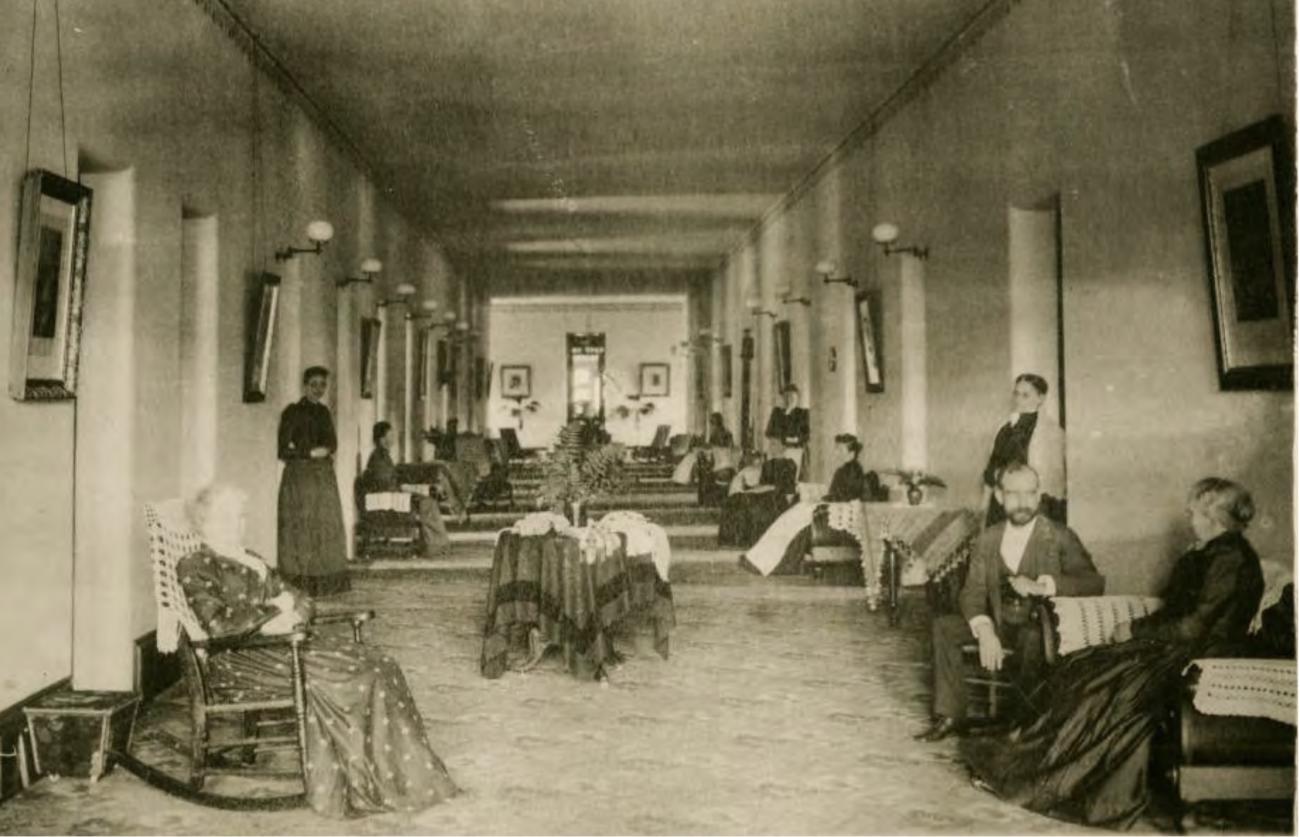The Ridges was originally developed as the site for Athens Lunatic Asylum, 150 years ago. The main structure that functioned as the mental hospital building was designed under the famous Kirkbride plan and gave this structure its memorable and beautiful layout. After years of declining patient numbers and the onset of the de-institutionalization movement in the 1980’s the mental hospital saw its inevitable end, and in the early 1990’s Ohio University acquired the entirety of the land and buildings.
History At a Glance
- Pre-1868 — In the 19th century, changes in attitudes about mental illness and the role of governments in responding to social problems led to development of asylums – places of respite and healing.
The emergence of a coherent philosophy for treatment of mentally ill — the Kirkbride Plan — gave a roadmap for the creation of asylums. The post-Civil-War era Ohio was in a position to act on this progressive vision.
Community members were strongly invested in this facility from its beginnings, through their advocacy and support that determined its location.- Dr. Thomas Kirkbride's plan outlined a new approach to the challenges of mental illness. Kirkbride advocated for Moral Treatment: An approach that emphasized humane conditions with the goal of rehabilitating patients to the highest extent possible. This included creating the physical building to certain specifications including size, access to light and fresh air, a natural setting for recreation, stimulation and farming.
- 1868 — On November 5, 1968, the first cornerstone was laid.
- 1874 — Asylum opened
- 1880 —A decade-long endeavor started, called the Healing Landscape, to update landscaping to make the area a sustainable healing community. Work included designing a water purification system and ponds, farming/working fields, boating, grading/filling/leveling fields, adding a vegetable garden and permeable boundary, livestock, a greenhouse, orchard, and more.
- 1903 — Moral Treatment model shifted to Custodial care model. This new plan shifted from asylum-based care to research-based modern medicine specialties. Cottages were constructed to house even more patients, grouping patients in dormitory-like rooms.
- 1950s — The facility was treating 1,800 patients at this point, almost triple what Kirkbride originally envisioned.
- Throughout the 1950s, psychiatry sought new ways to help patients and alleviate their suffering, including hydrotherapy, electro shock, lobotomy and art therapy.
- In the 1950's, a major breakthrough happened with the release of the first psychotropic drugs for treatment of mental illness. This provided sometimes dramatic improvements in mental function, reducing the need for institutionalization.
- 1970s-1980s —Asylum population was reduced from 1,800 to 200 by 1985. A new modern hospital was built (Appalachian Behavioral Health Care).
- 1988 — State transferred the facility to the stewardship of Ohio University. community contest renamed the Asylum to The Ridges.
- 1993 — Last patients transferred to nearby Appalachian Behavioral Health Care facility.
Historical Overview
This information is largely based on the "Historical Overview of the Athens State Hospital" prepared by Nancy Recchie and is used with her permission.
The large complex of buildings sited on a wooded hillside overlooking the campus of Ohio University, which is known today as The Ridges, was originally called the Athens Lunatic Asylum and later the Athens State Hospital. As it was originally conceived during the late 19th century with additional building in the early 20th century, the construction and development of this facility for the mentally ill was a massive undertaking.
Opening in 1874, the Athens asylum represented the vanguard in the treatment of mental health patients. It was based on the ground-breaking work of Dorothea Dix, a social reformer, and Dr. Thomas Kirkbride, superintendent of the Pennsylvania Hospital for the Insane for 43 years, who became a leader in the Moral Treatment concepts as the basis for asylum design and construction. Three Ohio mental institutions were constructed according to the “Kirkbride Plan” — Dayton, Athens, and Columbus (since demolished).
Dr. Thomas Kirkbride was a leading proponent of the theory that the institution itself - in its design and administration — played a key role in the cure of its patients.
The site was considered as important as the building, and Kirkbride suggested that mental institutions be located in the country and besurrounded by attractive scenery. In addition, he suggested that every hospital have adequate acreage for “farming, gardening, exercise, labor and occupation.” The development of the grounds began in the 1870s and continued for many years.
Landscape Architect Herman Haerlin, from Cincinnati, worked with Athens gardener George Link to create a parklike setting of approximately 60 acres. By the early 20th century, there were four ponds, a waterfall, paths and a large variety of types of trees, plants and flowers.
By the turn of the century, mental health advocates were beginning to advocate a different physical plan for treatment of the mentally ill — the cottage plan. The gaining popularity of this movement is evident from the number of independent buildings constructed during the first decade of the 20th century.
The facility adapted to evolving theories of the best practices for treating mental health patients and in the 1940’s the facility was renamed the Athens State Hospital.
This site is cherished by the local community as many residents have family members that worked at the Ridges or were patients there. The community and county residents used the grounds of the Ridges as a public park and many have fond memories of picnicking and going to see the alligator that once resided in the fountain at The Ridges. By the 1980s treatment for the mentally ill changed radically and moved away from institutionalization toward treatment in the community -- either as out-patients or in smaller group homes placed in residential neighborhood settings.
This course of action led to the closing of the Athens State Hospital complex and discussion of its possible demolition. Instead, the State of Ohio transferred the property to Ohio University, which has been gradually upgrading the buildings as new uses are found for the space.

